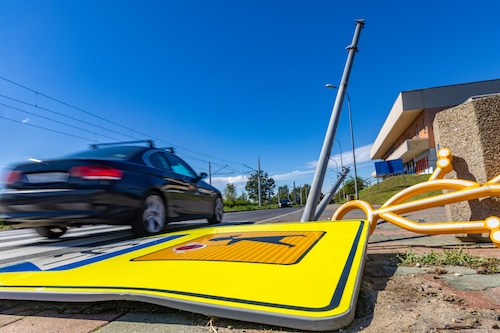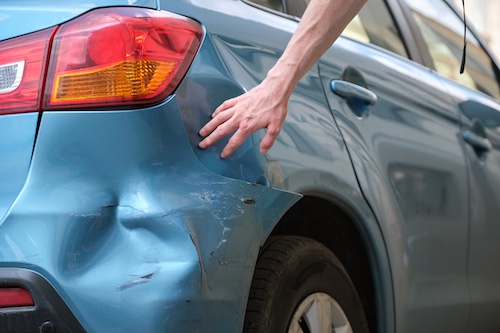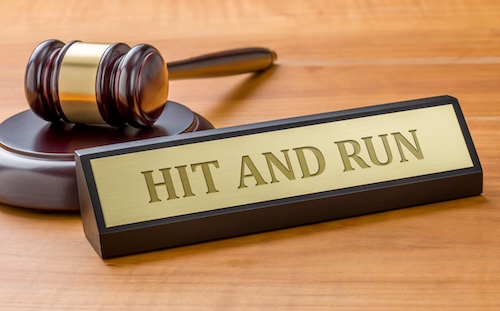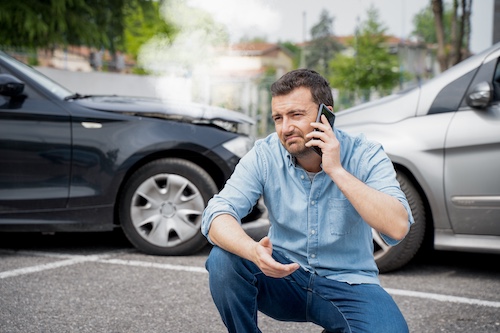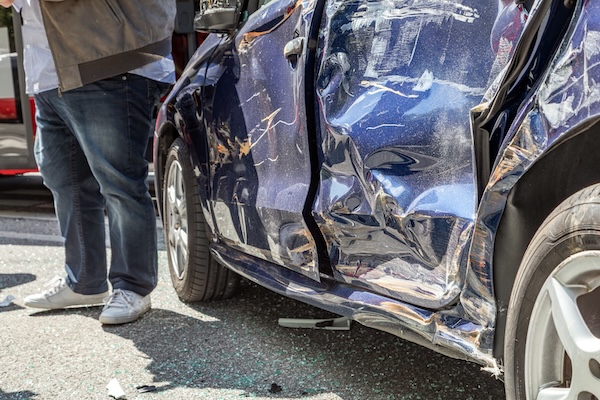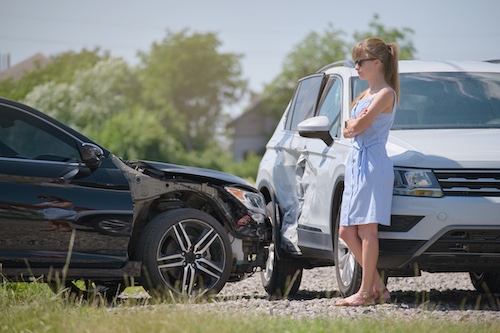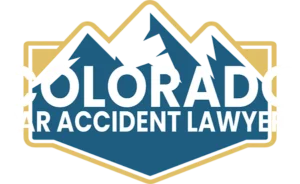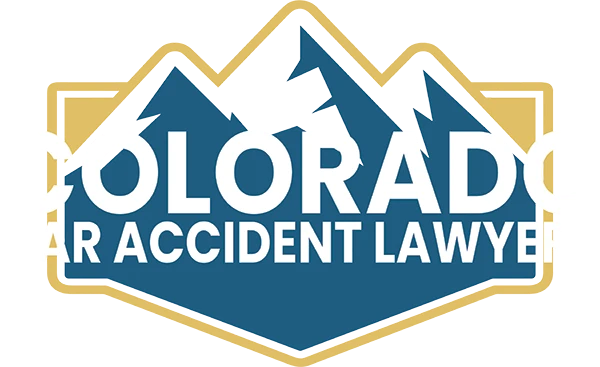Understanding Colorado Hit-and-Run Accidents
At Colorado Car Accident Lawyers, we focus on protecting the rights of accident victims across the state. Our team has experience handling hit-and-run accidents, serious injury claims, and complex insurance disputes. We know the impact a crash can have on your life, and we work tirelessly to hold negligent drivers accountable while pursuing full compensation for your injuries and losses. Every case we take is treated with personal attention, clear communication, and a commitment to achieving the best outcome for our clients.
A hit-and-run accident can leave victims injured, confused, and searching for answers. In Colorado, strict laws hold drivers accountable when they flee the scene, yet victims are often left to deal with medical bills, property damage, and uncertainty.
In this blog, you will learn what to do after a hit-and-run accident in Colorado, how state laws apply, what penalties fleeing drivers face, and why working with an experienced Colorado car accident lawyer can make a difference in protecting your rights and pursuing fair compensation.
Colorado Hit-and-Run Laws
Colorado has strict laws for drivers who leave the scene of a hit-and-run accident. These laws outline duties for drivers and list penalties that grow more severe depending on the harm caused.
Duty to Remain at the Scene
Under C.R.S. § 42-4-1601, any driver involved in a car accident that causes injury or death must remain at the scene. The driver must stop the vehicle, stay nearby, and wait for police to arrive. Fleeing the scene of an accident with injuries is a felony crime in Colorado.
Duty in Accidents Involving Property Damage
C.R.S. § 42-4-1602 covers accidents that cause only property damage. Drivers must stop, identify themselves, and share insurance information with the other driver or property owner. Leaving after a hit-and-run crash with property damage is a misdemeanor offense.
Duty to Give Information and Render Aid
According to C.R.S. § 42-4-1603, drivers must provide their name, address, driver’s license, and vehicle registration. They must also render aid to any injured person until emergency help arrives. Failing to render aid can increase penalties and create felony charges if serious bodily injury or death occurs.
Duty After Hitting a Parked Car or Fixed Object
C.R.S. § 42-4-1604 requires drivers who strike a parked car, fence, or other fixed object to stop and attempt to notify the owner. If the owner cannot be found, the driver must leave a written note with contact and insurance information. Failing to do this is also treated as a run accident under Colorado law.
Penalties for Violating Colorado Hit-and-Run Laws
Penalties vary depending on the outcome of the hit-and-run accident. Property damage may bring fines and license suspension. Bodily injury can lead to jail time. Serious bodily injury or death can result in felony charges, prison sentences, and permanent marks on a driver’s record. Each case depends on the harm caused and the driver’s actions at the scene of the accident.
What to Do Immediately After a Hit-and-Run Accident
The moments after a hit-and-run accident are critical. Victims should act quickly to protect their safety, gather evidence, and strengthen any future claim.
Ensure Safety First
Move yourself and any passengers to a safe location away from traffic if possible. Turn on hazard lights to alert other drivers and reduce the risk of another crash. Once secure, check everyone in your vehicle for injuries. Even if you feel unharmed, the shock of the accident can hide pain or symptoms of serious bodily injury. Staying calm and focused helps you take the right steps at the scene.
Call the Police
Contact law enforcement immediately and report the hit-and-run accident. Filing a police report creates an official record, which is vital if the at-fault driver is located later. Police can also begin investigating right away, interviewing witnesses and looking for surveillance cameras in the area. Make sure to tell the police everything you observed about the other driver and the vehicle involved.
Help Injured Persons
If anyone at the scene is injured, provide reasonable aid until emergency responders arrive. Colorado law requires drivers to render aid after an accident involving injuries. This could mean calling 911, applying basic first aid if you are able, or simply staying with an injured person until help arrives. Taking quick action can prevent injuries from getting worse and may save lives.
Gather Information at the Scene
Try to capture as many details as you can about the crash. Write down the license plate number, make, model, and color of the hit-and-run driver’s vehicle. Note the exact location, the direction the car fled, and the time the accident occurred. Record the sequence of events leading up to the crash, as this information may be useful later when working with police or a Colorado car accident lawyer.
Speak With Witnesses
If witnesses were present, ask what they saw and collect their contact information. Witnesses may have noticed details you missed, such as the driver’s appearance or additional identifying features of the fleeing vehicle. Independent statements carry weight in police reports, insurance claims, and potential court cases. A witness can help confirm who was at fault and strengthen your claim for compensation.
Take Photos and Notes
Use your phone to photograph the accident scene, your injuries, and all visible property damage. Capture wide shots of the area as well as close-up images of damaged vehicles, skid marks, or debris left behind. Photos serve as strong evidence when proving the seriousness of the crash. Write notes about your condition and any pain you feel, since injuries can worsen over time. These records can support both medical treatment and legal claims later.
Duties of Drivers in Colorado
Colorado law places specific responsibilities on drivers after any car accident. These duties focus on helping victims, protecting property, and ensuring accountability. Ignoring them can result in criminal charges, license suspension, and long-term consequences.
Duty to Remain at the Scene
Drivers involved in a crash must stop their vehicle and stay nearby until police arrive. Leaving the scene without waiting for law enforcement is treated as fleeing, and penalties increase if someone is hurt or killed.
Duty in Property Damage Accidents
When only property damage occurs, drivers must still stop and remain at the location. They are required to provide their insurance information, driver’s license, and vehicle details to the other driver or property owner. Failing to share this information can still lead to criminal punishment.
Duty to Share Information and Help the Injured
Drivers must give their name, address, license details, and vehicle registration to others involved in the crash. They must also provide reasonable assistance to anyone injured. This may mean calling emergency services, arranging transport to a hospital, or staying with the victim until help arrives.
Duty After Striking a Parked Car or Object
If a driver hits a parked car, fence, or other fixed object, they must make an effort to locate the owner. If no one is available, the driver must leave a written note with contact and insurance details in a visible place. Failing to do so is treated as leaving the scene of an accident.
Why These Duties Matter
Following these duties ensures victims receive medical care, property owners get notified, and police can create an accurate report. Drivers who ignore these responsibilities face harsher charges, higher fines, and possible jail time, depending on the accident’s outcome.
Penalties for a Hit-and-Run in Colorado
Leaving the scene of a hit-and-run accident carries serious penalties in Colorado. The punishment depends on the damage caused, ranging from property loss to death. Each level brings its own criminal charges, fines, and possible jail time.
Property Damage Only
If a driver leaves after causing property damage, the act is treated as a misdemeanor traffic offense. Penalties can include up to 90 days in jail, fines up to $300, and possible license suspension. Even minor damage is taken seriously under Colorado law.
Bodily Injury
When a hit-and-run crash results in injury, the penalties rise. A driver may face up to one year in jail and fines up to $1,000. The court may also order a longer license suspension, higher insurance costs, and additional restrictions.
Serious Bodily Injury
If the victim suffers serious bodily injury, the offense becomes a felony. Punishment may include 2 to 6 years in prison and fines reaching $500,000. A felony conviction also creates a permanent criminal record that can affect employment and driving rights.
Death
When a victim is killed in a hit-and-run accident, the driver faces one of the harshest charges under state law. Penalties include 4 to 12 years in prison and fines as high as $750,000. The court may also impose a long license revocation, leaving the convicted driver unable to legally operate a vehicle for years.
Additional Consequences
Beyond jail and fines, drivers convicted of hit-and-run crimes often face long-term insurance increases and civil lawsuits from victims. A conviction also leaves a permanent mark on the driver’s record, which can affect future opportunities.
Steps Victims Should Take After a Hit-and-Run Accident
Victims of a hit-and-run accident must act quickly to protect their health, secure evidence, and build a strong case for compensation. Each step helps preserve rights and strengthens future claims.
Call the Police
Report the accident immediately and request an officer at the scene. A police report documents what happened, records witness statements, and may help identify the hit-and-run driver. This record is also important for insurance claims and any later legal action.
Seek Medical Attention
Even if injuries seem minor, visit a doctor as soon as possible. Some injuries, such as concussions or internal trauma, may not appear right away. Medical records also provide proof of bodily injury, which is vital for both insurance coverage and compensation claims.
Notify Your Insurance Company
Contact your insurance provider to report the accident. Provide accurate details but avoid admitting fault. Insurance coverage may apply even if the at-fault driver is never found, especially if you have uninsured motorist protection.
Gather Evidence
Collect as much information as possible from the scene. Photos of damaged vehicles, injuries, skid marks, and property damage can support your claim. Keep copies of medical bills, repair estimates, and any written notes about the accident.
Speak With Witnesses
If bystanders saw the crash, ask for their names and contact information. Witness statements often provide key details about the other vehicle or the direction it fled. Police and insurance companies rely on these accounts when reviewing the accident.
Contact a Colorado Car Accident Lawyer
A Colorado car accident attorney can help victims pursue compensation, handle insurance disputes, and investigate the accident. Legal guidance ensures deadlines are met and claims are properly filed. Having professional assistance increases the chances of recovering full damages.
Get Help After a Colorado Hit-and-Run Accident!
If you or someone you care about was injured in a Colorado hit-and-run accident, you do not have to face the aftermath alone. Our team at Colorado Car Accident Lawyers understands how these crashes affect your health, your finances, and your future. We work to identify the at-fault driver when possible, pursue every available insurance option, and help you recover damages for medical costs, lost income, and pain and suffering.
Contact us at 864-313-2487 for a free case consultation today!
